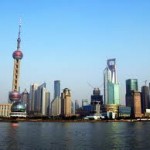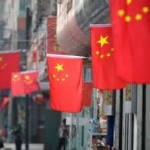Posts Tagged ‘Investments’

China’s rapid growth last three decades offered big opportunities for foreign companies eager to expand their business and market. Moreover, special privileges and tax incentives provided for these big companies led them heavily invest in China’s market and increased inflow of FDI into country. As a result, today most global companies like General Motors, Siemens, Coca-Cola, Nike and many others are making more aggressive push into China, in some cases moving not only their production centres but their research and development centres too (Barboza, 2010). Also, it is clear that FDI is usually imported to a host country by rather multinational companies than small-medium sized businesses, whose seeking to take advantage of particular benefits, that is to say cheaper work force, cheaper land value, cheaper taxes etc, in order to reduce the production cost and to gain a competitive advantage over rival companies. Therefore, it is important to acknowledge how vital these Multi-National companies (MNC’s) have been to China’s rapid expansion in foreign trade and its export growth as they introduced new and advanced technologies in many sectors and industries, most of which are export oriented, which in turn raised product quality. Furthermore, with creation employment and higher wages, they helped to raise living standards and to improve local infrastructure in rural areas of country. Main determinants of FDI in China There have been numerous factors that resulted in significant proportion of FDI inflows into China. But the most important ones that attracted huge levels of FDI into the country are the following: First of all, since the economic reformation of China in 1979, the country realized that it needs foreign capital in order to improve the economic infrastructure of the country, therefore, it promoted the trade openness that enhanced the levels of FDI. Secondly, due to increasing levels of…

Total inward and outward FDI flows Inward FDI – Since after the economic reformation of China, the country moved towards more market oriented economy, it has received a very large part of international direct investment flows.China has become the second largest host country to FDI in the world afterUnited States, and the largest FDI recipient among the developing countries. In fact, as stated by OECD report (2000), for period of twenty years, actual amount of FDI inflows from 1979 to 1999 totaled to 306 billion US dollar, which is equal to 10 percent of direct investments worldwide and around 30 percent of investment amount for all the developing countries. Furthermore,China consistently continued to receive a large share of direct investments in developing countries in the first decade of 21st century. This argument backed up with figures published by OECD (2005) with the inward FDI into mainland China rising to amount of $55billion in 2004 from $47 billion in 2003. However, there is significant concern among experts in China about possible overheating of the investment cycle as much of this investments accounted toHong Kongbased investors. Outward FDI – While China continues to be largest FDI recipient, it is also gaining importance in world stage as outward investor as well. Many large companies operating in China appear to developing into truly international corporate networks through investments. Moreover, Chinese enterprises are increasingly trying to do “strategic” investments abroad, not least to gain access to raw material. However, the process has been uneven. Figures released by China’s State Administration for Foreign Exchange (OECD Observer, 2005) shows that net outward FDI declined from a peak of $6,9 billion in 2001 to £152,3 million in 2003, then slightly recovered to $1,8 billion in 2004. Nevertheless, OECD figures suggest that these figures may understate the position. …

Greenfield investment is a type of business expansion where investments are made on the facilities in a new market where there were no such a facilities previously (Barclay, 2002). Aldi and Lidl have increasingly relied in greenfield investment as they main new market entry strategy. The choice of greenfield investment was done by Aldi and Lidl management among other alternative methods of new market entry such as exports, forming joint-ventures, mergers and acquisitions etc. for a range of reasons. All of these new market entry strategies have their advantages and disadvantages some of them have been discussed below. According to Ando (2006) companies will be in a better position to fully utilize their company-specific advantages if their choose greenfield investment as their new market entry strategy. This statement can be shown as one of the main reasons why Aldi and Lidl have increasingly relied on greenfield investment as their main new market entry strategy. Both companies had their competitive advantages that were their ability to keep business costs down by saving on additional costs such as customer services, ‘art-of-state’ shop designs and additional features. If Aldi and Lidl had chosen any alternative new market entry strategy their current competitive advantages would be put under risk, threatening to the overall success of the business. Moreover, “reasons for greenfield investment could be that companies frequently make foreign investments where there is little or no competition, so finding a company to buy may be difficult” (Epperlein, 2007, p.22). This argument was true as well due to the fact that discount retailing business concept Aldi and Lidl adhered to was relatively new at the time of their expansion and there were no retailers using the same business concepts in Aldi and Lidl target markets, these companies could form joint-ventures with. Another possible reason for the…
